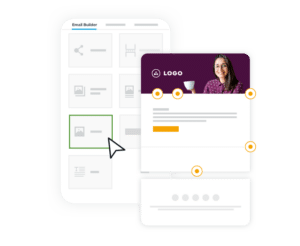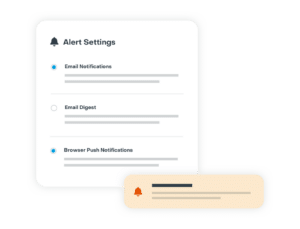3 Best Practices for B2B Email Marketing Deliverability
Despite the increasing popularity of integrated chat apps, social media, and messenger apps, email has remained central to digital communication. When it comes to B2B, email is still the quickest and most effective channel of communication for receiving and transmitting data. This means email marketing continues to be a powerful lead generation and nurture tool. It’s best to remember that even though your company can create compelling content and offers, but if you’re on a blacklist, your emails will never reach your recipients’ inboxes.
Marketing automation platforms, such as Sugar Market, include deliverability assessment tools to monitor your domain’s reputation and inbox placement rates. This can help you assess minor fluctuations before they become a problem.
Achieving optimal B2B email deliverability requires following a set of tried and true protocols. To help you start, we’ve compiled a list of best practices to improve your email deliverability.
Clean Your Data
Inactive and low quality addresses dilute your campaign performance scores, expose you to spam filters, lower your deliverability rates, and make it difficult to identify high and low-performing assets. You also run the risk of emailing people who don’t fit your buyer persona, wasting valuable resources on leads that will never convert. Here are some good practices to consider:
- Check email addresses upfront before any first send. Look for malformed addresses (nancy@yhoo.com, nancy@a0l.com), bad addresses (asdf@asdf.com, 111@111.com), and role accounts such as noreply@ to eliminate bad records from your list.
- Clearly state your opt-in permission request. You may even go a step further and consider implementing a double opt-in system for collecting valid emails. Doing so will ensure your leads only provide actual active addresses to receive your content offering.
- Mail frequently enough to your database to normalize your lists and remove bounced addresses.
- Plan for a periodic review and inventory of your database. Devise strategies to re-engage or remove addresses that have not opened or clicked in some time.
Ask Permission
Remember that old saying, “Ask for forgiveness, not permission?” It doesn’t apply to email marketing. One of the worst mistakes marketers can make is to buy and market to purchased lists. Not only is this a violation of laws in some countries, but it’s also a surefire way to get you blacklisted and blocked. In the best-case scenario, you will decrease your overall deliverability, drive up complaints and unsubscribes, and deteriorate your reputation.

Instead, follow these best practices for obtaining permission to communicate with your prospects:
- Always ask for permission to email when you collect addresses. Be clear and specific with your permission request and explain why you intend to communicate with them.
- Use opt-in checkboxes to gain express permission. Do not pre-check the box!
- Set expectations upfront and let your recipients know why they’re providing an email for, i.e. what content are you sending, and how often.
- Organically grow lists. Never purchase or rent lists because permission is not transferable. Don’t be deceptive in your permission request—don’t hide the permission in fine print or “Terms of service” notice.
- Enable choice and provide subscription preferences to meet your contact’s needs best.
Send Welcome Messages
Your audience receives a large amount of emails on a daily basis, and you have few seconds to get them interested. Pay attention to your welcome messages as they are an excellent opportunity to reinforce how you got to know this contact and map out how they expect to hear from you in the future.
For example, you attend a trade show and capture a large number of leads. You need to consider your first engagement with these leads. If you drop them into your regular cycle of messages without any acknowledgment at the start of the relationship, you miss a critical opportunity to set the stage for a long-lasting commitment.
Engaged recipients are excited to hear from you. To leverage their interest, you may:
- Send a welcome message as soon as possible. They may not remember you if too much time passes. Also, be sure you send a confirmation message after any customer interaction. It is important to let them know their actions have been noticed.
- Create a welcome message template and introductory content for each unique acquisition source. You may have templates for leads acquired through trade shows, website traffic, referral partners, or other sources. Marketing automation tools, such as Sugar Market can help you create email templates which your sales team can leverage directly within your CRM of choice.
- Establish your brand in their inbox. Brand your messages and From line, so your contacts will recognize you in the future and write an engaging subject line—the first thing your audience will notice when they open your email.
- Include a call to action that provides clear value to them.
Besides the best deliverability practices listed above, you may also consider applying these strategies:
- Keep your emails responsive and dark mode compatible across devices.
- Schedule emails at the time your recipients are most likely to open them.
- Test emails with different versions before sending them out.
- Provide offers and deals that encourage your audience to stay with you.
Closing Thoughts
Following good deliverability practices is often a battle in organizations that suffer from a slow lead acquisition. Many marketers face internal pressure from sales to deliver new prospects and executives who seek higher lead counts. Those pressures will always be present, but a marketing automation tool such as Sugar Market allows you to let the platform do the work by allowing you to easily create conversion-focused emails, landing pages, and forms with intuitive drag-and-drop builders.

Additionally, Sugar Market tracks prospect engagement across channels and records it in an easy-to-interpret buyer journey view so you can see which campaigns have the highest impact. It’s important to incorporate these best practices into your existing email marketing strategy. If you want to learn more on how your company can build better customer relationships, how to improve conversions and drive greater ROI over time, feel free to reach out to us at any time.
Want to learn more about how you can create unique and personalized customer journeys? Check out our recent guide, Fuel Growth for Marketing, where we interviewed industry expert Andrew Davis on the topic.



